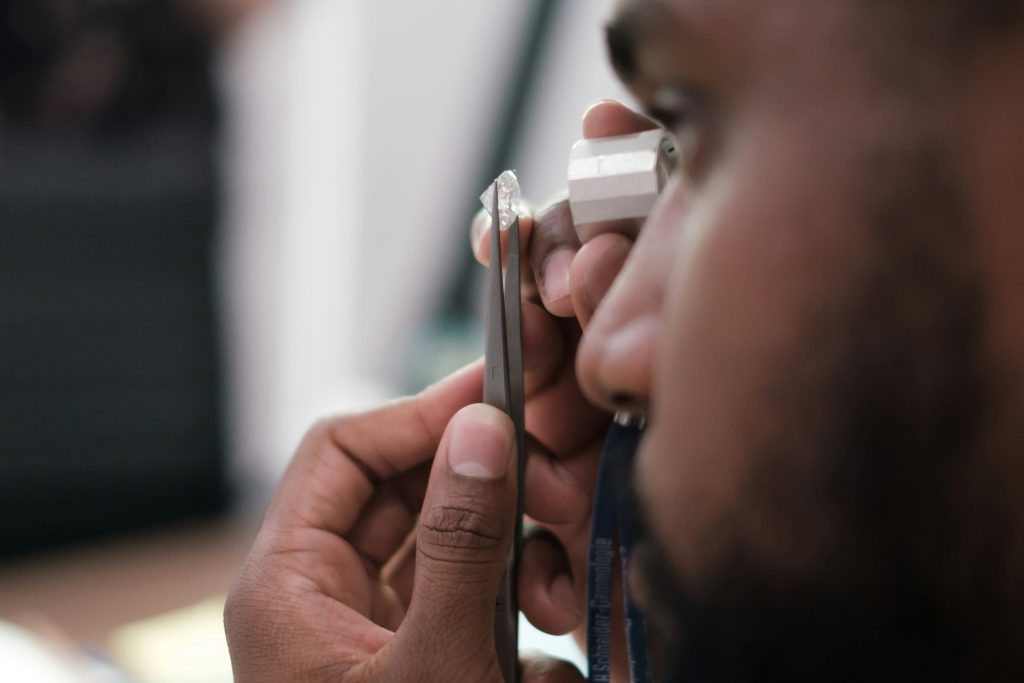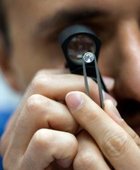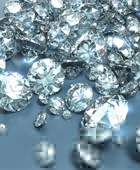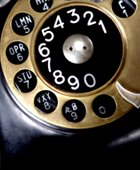Selling a diamond can be a challenging process, especially if you’re unsure of its current market value. Diamonds, unlike many other luxury goods, do not have a fixed resale value, and understanding the factors that influence their worth is crucial to getting a fair price. This comprehensive guide will walk you through the key factors that affect diamond resale value, as well as provide tips on how to maximize your returns when selling your diamond.

1. Understanding the Factors That Affect Diamond Resale Value
The resale value of a diamond is determined by a combination of factors, many of which are similar to those that determine its original purchase price. However, the dynamics of the resale market can differ significantly from retail. Here are the primary factors to consider:
- The 4 Cs: Carat, Cut, Color, and ClarityThe 4 Cs remain the most important factors in determining a diamond’s resale value:
- Carat Weight: Larger diamonds are generally more valuable because they are rarer and more desirable. However, the value does not increase linearly with size; for example, a 2-carat diamond will be worth more than two 1-carat diamonds of the same quality.
- Cut: The cut of a diamond affects its brilliance and overall appearance. Well-cut diamonds are more attractive and therefore retain a higher resale value. Diamonds with Excellent or Very Good cut grades are more likely to fetch higher prices than those with lower cut grades.
- Color: Colorless diamonds (graded D-F) typically have the highest resale value. As you move down the color scale, the value decreases. However, diamonds with faint color (G-I) can still have a good resale value, especially if they have a high clarity grade.
- Clarity: Clarity refers to the presence of internal or external imperfections. Diamonds with fewer inclusions and blemishes are more valuable. Flawless and Internally Flawless diamonds (IF) command the highest prices, but diamonds with minor inclusions (VS1, VS2) can also retain significant value.
- Market DemandThe demand for certain diamond characteristics can fluctuate based on current trends and consumer preferences. For example, round brilliant diamonds are generally more popular and easier to sell than fancy shapes like marquise or heart. The overall demand for diamonds also influences resale value—if the market is saturated, prices may be lower.
- CertificationA diamond with a certificate from a reputable gemological laboratory, such as GIA, HRD, or IGI, is likely to have a higher resale value. Certification provides assurance to buyers that the diamond’s quality is accurately represented, making it easier to sell and more valuable.
- Condition and WearThe condition of the diamond can significantly affect its resale value. A diamond that has been well-maintained and shows no signs of wear, such as chips, scratches, or abrasions, will fetch a higher price. Regular cleaning and proper care can help maintain the diamond’s condition over time.
- Setting and MountingWhile the diamond itself is the primary factor in determining value, the setting can also impact resale price. However, in many cases, the value of the setting is separate from the diamond. If you plan to sell a diamond that is mounted in a setting, consider whether it might be more profitable to sell the diamond separately or as part of the complete piece of jewelry.
- Age and ProvenanceOlder diamonds, especially those with historical significance or unique provenance, can sometimes command higher prices. Vintage and antique diamonds that are well-preserved or have a documented history can be particularly valuable. However, for most diamonds, age does not necessarily increase value unless accompanied by these factors.
2. Tips for Getting an Accurate Appraisal
Before you sell your diamond, it’s important to get an accurate appraisal to determine its current market value. Here are some tips to ensure you get a fair and accurate assessment:
- Choose a Qualified AppraiserEnsure that the appraiser you select is certified and experienced in valuing diamonds. Look for credentials from reputable organizations such as the American Gem Society (AGS) or the International Society of Appraisers (ISA). A qualified appraiser will have the expertise to accurately assess the diamond’s quality and market value.
- Request a Detailed Appraisal ReportA detailed appraisal report should include a comprehensive description of the diamond, including its weight, dimensions, cut grade, color grade, clarity grade, and any additional features such as fluorescence. The report should also include an estimated resale value based on current market conditions.
- Compare Multiple AppraisalsIf possible, obtain appraisals from multiple sources to get a range of values. This can help you gauge the accuracy of each appraisal and ensure you’re not undervaluing your diamond. Be wary of appraisers who charge exorbitant fees or who seem overly eager to purchase the diamond themselves.
- Consider the Type of AppraisalThere are different types of appraisals, including retail replacement value, fair market value, and liquidation value. For resale purposes, you’ll want to focus on fair market value, which represents what a willing buyer would pay a willing seller in the current market. Retail replacement value is typically higher and is used for insurance purposes, while liquidation value is lower and reflects what you might get in a forced sale.
3. Selling Your Diamond: Where and How
Once you have a clear understanding of your diamond’s value, the next step is to decide where and how to sell it. There are several options available, each with its pros and cons:
- Jewelry StoresMany local jewelry stores buy diamonds from individuals, either for resale or to use in custom jewelry. Selling to a jeweler can be convenient, but keep in mind that they need to make a profit, so their offer may be lower than the diamond’s market value. It’s advisable to get quotes from multiple jewelers to find the best offer.
- PawnshopsPawnshops offer quick cash for diamonds, but they typically offer lower prices than other buyers. Pawnshops are best suited for those who need to sell quickly and are willing to accept a lower price in exchange for speed and convenience.
- Online MarketplacesOnline platforms like eBay or Craigslist allow you to sell directly to buyers, potentially fetching a higher price than selling to a jeweler or pawnshop. However, selling online requires more effort, and there’s a risk of dealing with fraudulent buyers. Make sure to use secure payment methods and meet in safe, public locations if selling in person.
- Diamond Buying CompaniesSeveral companies specialize in buying diamonds directly from individuals. These companies often provide an online quote based on your diamond’s specifications, followed by a final offer after an in-person or mail-in evaluation. While these companies offer convenience and competitive prices, it’s important to research their reputation and reviews before proceeding.
- AuctionsSelling your diamond at auction can be a good option if it’s a rare or high-value diamond. Auctions can attract serious buyers who are willing to pay a premium for exceptional pieces. However, auction houses typically charge a commission fee, which can reduce your final payout. Additionally, there’s no guarantee that your diamond will sell at the desired price.
- ConsignmentSome jewelry stores offer consignment services, where they sell your diamond on your behalf and take a percentage of the sale price as a commission. Consignment can take longer to complete but may result in a higher payout than selling directly to the store. Make sure to understand the terms of the consignment agreement, including the commission rate and the timeframe for the sale.
4. Maximizing the Resale Value of Your Diamond
To get the best possible price for your diamond, it’s important to take steps to maximize its resale value. Here are some strategies to consider:
- Maintain Proper DocumentationKeeping all original documentation related to your diamond can significantly boost its resale value. This includes the original purchase receipt, the diamond’s certificate (especially if it’s from a reputable lab like GIA or AGS), and any appraisal reports. These documents provide proof of the diamond’s authenticity and quality, which reassures potential buyers.
- Consider Cleaning and Re-CertificationA well-maintained diamond will look more attractive and could fetch a higher price. Before selling, consider having your diamond professionally cleaned to enhance its appearance. Additionally, if your diamond was last certified several years ago, getting a new certification from a reputable lab can provide an updated and trustworthy evaluation of its current value.
- Timing the MarketLike any commodity, diamond prices can fluctuate based on market conditions. Selling when demand is high, such as during the holiday season or in economic upturns, could help you secure a better price. Conversely, trying to sell during a downturn in the market might result in lower offers. Stay informed about the diamond market and consider timing your sale to align with favorable conditions.
- Highlight Unique FeaturesIf your diamond has any unique characteristics, such as an uncommon shape, rare color, or historical provenance, make sure to highlight these when marketing it. Unique features can set your diamond apart from others and attract buyers who are looking for something special, potentially allowing you to command a higher price.
- Presentation MattersWhen selling a diamond, presentation can make a difference. If you’re selling online or through a consignment shop, invest in high-quality photographs that showcase the diamond’s brilliance, cut, and clarity. A well-presented diamond is more likely to catch the eye of potential buyers and create a positive first impression.
5. Understanding the Challenges of Selling Diamonds
While it’s possible to get a fair price for your diamond, it’s important to be aware of the challenges you might face during the selling process:
- Expect Lower Offers Than Purchase PriceOne of the most common surprises for diamond sellers is realizing that their diamond is worth less than they paid for it. Retail diamonds are often sold with a significant markup, which includes the jeweler’s overhead and profit margins. As a result, the resale price is usually lower than the original purchase price, sometimes by 20% to 50% or more. Understanding this reality can help set realistic expectations.
- Liquidity and PatienceDiamonds are not as liquid as other assets like cash or stocks, meaning they might take time to sell. If you’re in a hurry to sell, you might have to accept a lower offer. On the other hand, if you have time and patience, you can wait for the right buyer who is willing to pay a fair price.
- Dealing with BuyersFinding a trustworthy buyer is essential to getting a fair deal. Unfortunately, the diamond resale market can attract unscrupulous buyers looking to take advantage of sellers. Be cautious and do your due diligence when dealing with potential buyers. Verify their reputation, read reviews, and if possible, meet in person in a secure location to finalize the transaction.
- Emotional AttachmentDiamonds often carry significant emotional value, especially if they were given as a gift or inherited. This emotional attachment can make it difficult to part with the diamond or accept an offer that seems lower than its sentimental worth. It’s important to approach the sale with a clear understanding that the market value may not reflect the personal value you place on the diamond.
6. Alternative Options: Trading or Upgrading Your Diamond
If selling your diamond outright doesn’t appeal to you, consider alternative options like trading or upgrading:
- Trading for a New DiamondMany jewelers offer trade-in programs that allow you to exchange your current diamond for a new one. This can be a great option if you’re looking to upgrade to a larger or higher-quality diamond. Trade-in programs typically credit a portion of your diamond’s value towards the purchase of a new diamond, making it a cost-effective way to get an upgrade.
- Upgrading Your SettingIf you’re not interested in parting with your diamond but want a fresh look, consider upgrading the setting. Changing the setting can give your diamond a new appearance without selling it. This can be especially appealing if your current setting is outdated or if you want to commemorate a special occasion with a new design.
- Gifting or Passing DownAnother alternative is to gift the diamond to a loved one or pass it down as an heirloom. While this option doesn’t provide financial returns, it allows the diamond to stay in the family or be cherished by someone special. Before gifting, consider having the diamond reappraised and perhaps reset in a new piece of jewelry to give it a fresh start.
7. Legal and Ethical Considerations When Selling Diamonds
When selling a diamond, it’s important to be aware of any legal and ethical considerations:
- Provenance and Conflict-Free AssuranceEnsure that your diamond is conflict-free and that you have documentation proving its ethical sourcing, especially if you’re selling to a socially-conscious buyer. The Kimberley Process and other certifications can help verify that the diamond was not involved in funding conflict or human rights abuses.
- Taxes and ReportingDepending on where you live, you may be required to report the sale of your diamond as a capital gain and pay taxes on any profit. Consult with a tax professional to understand your obligations and ensure that you comply with any reporting requirements.
- Avoiding ScamsThe diamond resale market can be ripe for scams, especially in online transactions. Be wary of buyers who offer significantly above-market prices or ask for unconventional payment methods. Use secure payment platforms, insist on meeting in person when possible, and consider involving a third-party escrow service to hold the payment until the transaction is complete.
8. Conclusion
Determining the resale value of your diamond and navigating the selling process can be complex, but with the right knowledge and preparation, you can achieve a successful outcome. By understanding the factors that influence diamond resale value, getting a thorough appraisal, choosing the right selling method, and being aware of the challenges and opportunities, you can maximize the return on your investment. Whether you decide to sell, trade, or keep your diamond, making an informed decision will help you feel confident and satisfied with the outcome.




